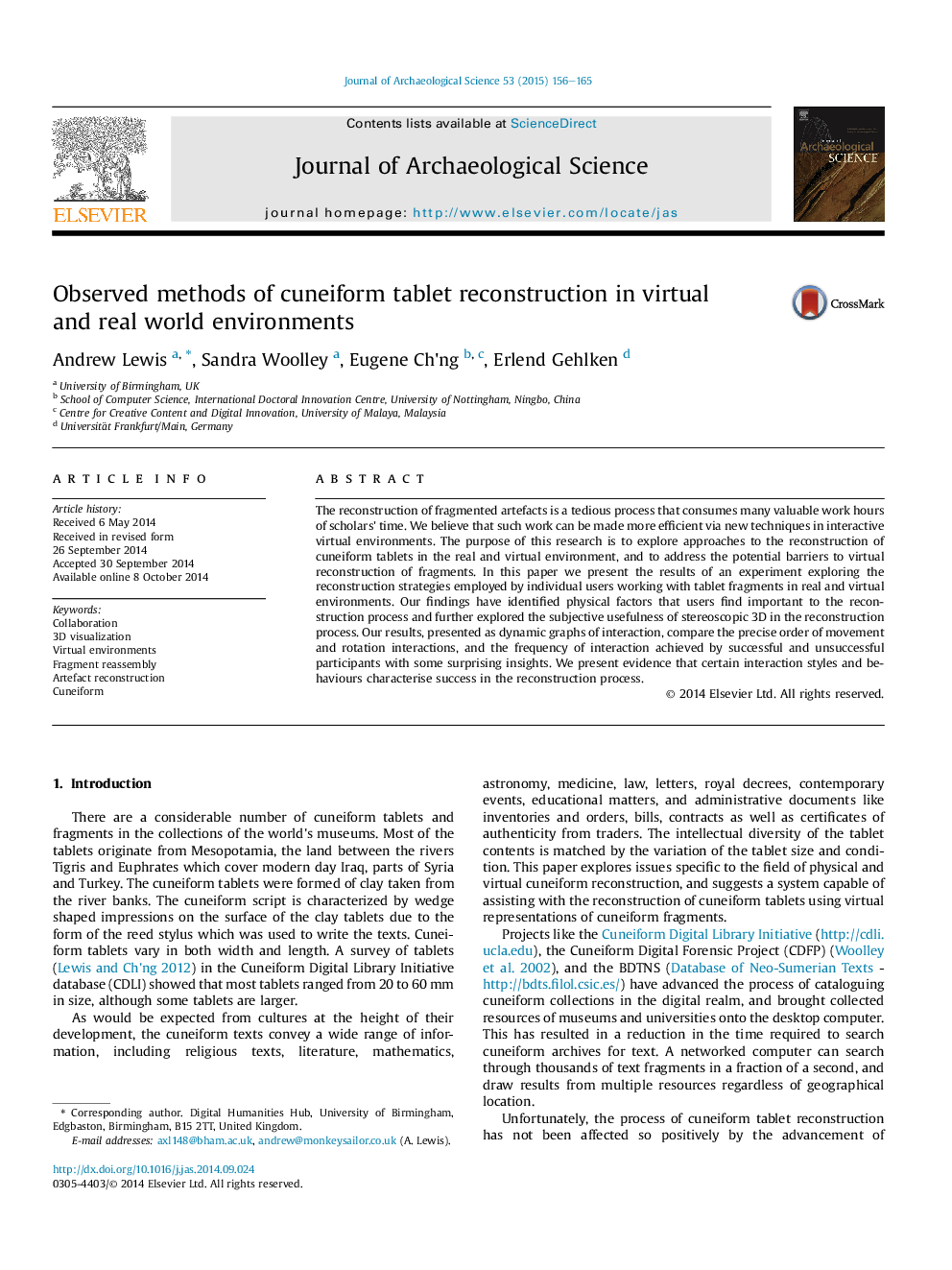| Article ID | Journal | Published Year | Pages | File Type |
|---|---|---|---|---|
| 7442517 | Journal of Archaeological Science | 2015 | 10 Pages |
Abstract
The reconstruction of fragmented artefacts is a tedious process that consumes many valuable work hours of scholars' time. We believe that such work can be made more efficient via new techniques in interactive virtual environments. The purpose of this research is to explore approaches to the reconstruction of cuneiform tablets in the real and virtual environment, and to address the potential barriers to virtual reconstruction of fragments. In this paper we present the results of an experiment exploring the reconstruction strategies employed by individual users working with tablet fragments in real and virtual environments. Our findings have identified physical factors that users find important to the reconstruction process and further explored the subjective usefulness of stereoscopic 3D in the reconstruction process. Our results, presented as dynamic graphs of interaction, compare the precise order of movement and rotation interactions, and the frequency of interaction achieved by successful and unsuccessful participants with some surprising insights. We present evidence that certain interaction styles and behaviours characterise success in the reconstruction process.
Related Topics
Physical Sciences and Engineering
Materials Science
Materials Science (General)
Authors
Andrew Lewis, Sandra Woolley, Eugene Ch'ng, Erlend Gehlken,
